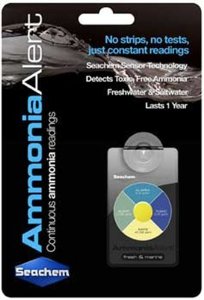- Joined
- Nov 9, 2014
- Messages
- 22,424
- Reaction score
- 34,846
Please see this updated information on fallow periods: https://www.reef2reef.com/threads/45-day-fallow-periods.805213/
Jay Hemdal 7/13/2023
The reason to go fallow (fishless) is to eliminate a fish disease from your DT (display tank). Going fallow works because you are denying the disease a fish host to feed on, essentially starving it to death.
In order to go fallow you must remove ALL fish from your DT. If just one fish is left behind, even a “disease resistant” species, then going fallow is for naught because the disease will continue its life cycle. Corals/inverts can be left in the DT, as those are not capable of hosting - although some are capable of “housing” the encysted stage of certain parasites for a period of time (see “Fallow Periods” below). It is important to continue to feed your corals/inverts while going fallow, and also put a pinch of flake or pellet food into the DT every 2-3 days to feed nitrifying bacteria in the absence of fish poop. Continue to do everything normally with your tank while going fallow; although you may wish to go lights out if you are running a fish only system (just don’t forget to feed that bacteria!)
Fallow Periods - Below is the general consensus fallow periods for all diseases that require it. In most cases, it is the longest known time period that the encysted stage can survive on corals, inverts, rocks, substrate without a fish host to feed on. The fallow period starts when the last fish is removed from the tank.
https://www.reef2reef.com/forums/fish-disease-treatment-diagnosis/189284-fish-diseases-101-a.html
https://www.reef2reef.com/forums/fi...is/189658-treatment-options-my-two-cents.html
Quarantining all future livestock purchases is also very important to avoid having to go fallow again in the future: https://www.reef2reef.com/forums/fish-disease-treatment-diagnosis/189815-how-quarantine.html
After the fallow period has ended, you can return your fish to the DT. I recommend doing it one fish at a time, spread out over a couple of weeks. This will give your bacterial levels time to adjust to the added fish bio-load, and avoid a potential mini-cycle/ammonia spike. I also prefer to add back smaller fish first, so they are established ahead of the larger, more aggressive ones.
Do be sure to closely monitor your ammonia levels while adding fish back. I advocate using a Seachem Ammonia Alert badge for constant monitoring:

Edit: You can also use a FW black molly to test if your fallow period has been successful: https://www.reef2reef.com/threads/fallow-periods-going-fishless.190324/page-2#post-2855190
Jay Hemdal 7/13/2023
The reason to go fallow (fishless) is to eliminate a fish disease from your DT (display tank). Going fallow works because you are denying the disease a fish host to feed on, essentially starving it to death.
In order to go fallow you must remove ALL fish from your DT. If just one fish is left behind, even a “disease resistant” species, then going fallow is for naught because the disease will continue its life cycle. Corals/inverts can be left in the DT, as those are not capable of hosting - although some are capable of “housing” the encysted stage of certain parasites for a period of time (see “Fallow Periods” below). It is important to continue to feed your corals/inverts while going fallow, and also put a pinch of flake or pellet food into the DT every 2-3 days to feed nitrifying bacteria in the absence of fish poop. Continue to do everything normally with your tank while going fallow; although you may wish to go lights out if you are running a fish only system (just don’t forget to feed that bacteria!)
Fallow Periods - Below is the general consensus fallow periods for all diseases that require it. In most cases, it is the longest known time period that the encysted stage can survive on corals, inverts, rocks, substrate without a fish host to feed on. The fallow period starts when the last fish is removed from the tank.
- Black ich (turbellarian worms) - 4 weeks
- Brooklynella aka “Clownfish disease” or “Brook” - 6 weeks
- Flukes (monogenean worms) - 4 weeks
- Ich (Cryptocaryon irritans) - 76 days
- Uronema marinum - No fallow period, as it does not require a fish host to survive. It is an opportunistic parasite that strikes when a fish’s immune system has been compromised. Uronema mainly affects damsels (especially chromis) and clownfish.
- Velvet (Amyloodinium) - 6 weeks
https://www.reef2reef.com/forums/fish-disease-treatment-diagnosis/189284-fish-diseases-101-a.html
https://www.reef2reef.com/forums/fi...is/189658-treatment-options-my-two-cents.html
Quarantining all future livestock purchases is also very important to avoid having to go fallow again in the future: https://www.reef2reef.com/forums/fish-disease-treatment-diagnosis/189815-how-quarantine.html
After the fallow period has ended, you can return your fish to the DT. I recommend doing it one fish at a time, spread out over a couple of weeks. This will give your bacterial levels time to adjust to the added fish bio-load, and avoid a potential mini-cycle/ammonia spike. I also prefer to add back smaller fish first, so they are established ahead of the larger, more aggressive ones.
Do be sure to closely monitor your ammonia levels while adding fish back. I advocate using a Seachem Ammonia Alert badge for constant monitoring:

Edit: You can also use a FW black molly to test if your fallow period has been successful: https://www.reef2reef.com/threads/fallow-periods-going-fishless.190324/page-2#post-2855190
Last edited by a moderator:


















